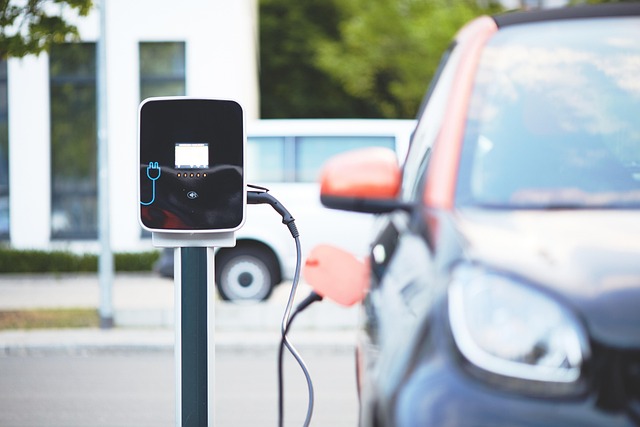Looking to register your car in California? This comprehensive guide breaks down the process step-by-step. From understanding crucial requirements like DMV procedures and VIN accuracy, to gathering essential documents and paying registration fees, we’ve got you covered. Learn how to navigate the system efficiently using trusted tools like a DMV VIN verifier for a seamless experience.
- Understand California Car Registration Requirements
- Gather Necessary Documents for Registration
- Visit the DMV and Complete the Application Process
- Verify Vehicle Identification Number (VIN) Accuracy
- Pay Registration Fees and Obtain Your Plate
Understand California Car Registration Requirements

Before registering your car in California, it’s crucial to understand the state’s specific requirements. The California Department of Motor Vehicles (DMV) mandates several key steps for car registration, including a valid vehicle identification number (VIN) verifier. This VIN verifier, often provided by a certified inspection station or through a mobile vin inspection service, ensures that your vehicle meets all safety and emissions standards set by the state.
Additionally, you’ll need to present essential documents such as proof of ownership, current insurance, and a completed application form. A mobile vin inspection or verification can streamline this process, allowing you to address any issues early on. By adhering to these requirements, you’ll ensure a smooth car registration experience in California.
Gather Necessary Documents for Registration

Before you start the registration process for your vehicle in California, make sure to gather all the essential documents required by the Department of Motor Vehicles (DMV). This includes proof of ownership, typically a vehicle title, as well as valid identification documents like a driver’s license or state ID card. Another crucial piece is the Vehicle Identification Number (VIN) from your car, which can be easily accessed through a DMV VIN verifier or even a simple online lookup using a mobile vin verifier.
Ensure you have all these documents ready before heading to the DMV. For added convenience, many services now offer mobile vin verification and inspection, allowing you to validate your vehicle’s details digitally. This streamlines the registration process, making it faster and easier for California residents to get their cars registered without unnecessary delays.
Visit the DMV and Complete the Application Process

To register your car in California, the first step is to visit a local Department of Motor Vehicles (DMV) office. Bring all necessary documents, including proof of ownership, vehicle identification number (VIN), and any relevant registration records from previous states. At the DMV, you’ll need to complete an application for vehicle registration, providing detailed information about your car, its history, and your personal details.
A crucial part of this process involves utilizing a DMV VIN verifier to ensure that all information is accurate and valid. This step helps in preventing fraud and ensures that your vehicle meets the state’s requirements. Alternatively, you can opt for a mobile VIN inspection or verification service, which offers convenience by allowing the process to be done from the comfort of your home or workplace.
Verify Vehicle Identification Number (VIN) Accuracy

Before initiating the car registration process in California, it’s crucial to ensure the Vehicle Identification Number (VIN) is accurate and legitimate. This critical 17-character code is unique to each vehicle, serving as a digital fingerprint that helps identify its make, model, year, and other essential details. Misplaced or incorrect VIN information can lead to registration delays or even rejection.
To verify the VIN accurately, consider using a trusted mobile VIN verifier or performing a VIN inspection yourself. These methods ensure you have the correct data when registering your vehicle at the California Department of Motor Vehicles (DMV). A valid and precise VIN is a cornerstone of the registration process, so take the time to confirm its integrity prior to proceeding with any administrative tasks.
Pay Registration Fees and Obtain Your Plate

After completing your vehicle’s registration application, it’s time to pay the necessary fees and obtain your license plate. The California Department of Motor Vehicles (DMV) will assess various charges, including a base fee, vehicle weight fee, and potentially other taxes or surcharges based on your vehicle type. You can typically pay these fees online, by phone, or in person at a DMV field office.
Upon payment confirmation, the DMV will process your application and issue your license plate using the Vehicle Identification Number (VIN). For convenience, many residents opt for a mobile VIN verifier to complete this step efficiently. A mobile VIN inspection service can verify your vehicle’s history and ensure the VIN matches the registered details, streamlining the registration process from start to finish.
Registering a car in California involves understanding specific requirements, gathering essential documents, visiting the DMV, verifying the Vehicle Identification Number (VIN), and paying fees. By following these steps and ensuring accurate VIN data using a reliable DMV VIN verifier, you can successfully complete the process and hit the road legally.
